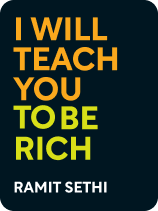

This article is an excerpt from the Shortform book guide to "I Will Teach You to Be Rich" by Ramit Sethi. Shortform has the world's best summaries and analyses of books you should be reading.
Like this article? Sign up for a free trial here .
Are you a responsible spender? Or do you often find yourself wondering where your money actually goes? Does your credit card bill often come as a surprise?
Most people are guilty of having no idea where their money goes or how much they’re spending on different things. As a result, they’re constantly feeling guilty about spending money because they don’t actually know how much money they have to spend, so each purchase could mean a nasty surprise on that month’s credit card bill.
In this article, you’ll learn about mindful spending and how you can spend even more than you currently do on the things you love while cutting costs on the things that aren’t as important.
What Is “Mindful Spending”?
Spending mindfully means planning your spending in advance. That way, you’ll not only be confident that you’re contributing enough to your savings and investment goals, but you’ll know that any money left over is yours to spend however you want—with zero guilt. Spending mindfully lets you spend extravagantly on the things you love without worrying if you can really afford it (or judging yourself for not saving or investing that money instead).
This approach is all about using your money to create your version of a rich life. For some people, that means going out four times a week; for others, it might mean having a fancy car, traveling often, or founding a nonprofit. Spending mindfully means making your money work for you and your specific goals.
This means that spending mindfully looks different for everyone. For example, the author has a friend who spends $21,000 per year partying—but who also maxes out his 401(k) contribution, hits his investment goals, and saves money by living in a small, bare apartment and never taking vacations. His solid financial foundation means he can afford to spend extravagantly on what he truly loves, guilt-free, because he knows he’s still being responsible with his money.
Spending Mindfully vs. Budgeting
Mindful spending is not the same as budgeting. Budgeting involves tracking every dollar you spend, all the time. That’s why most people don’t stick to a budget—it’s time-consuming, work-intensive, and complicated. Instead, spending mindfully automates this process—you decide in advance what you want to spend in a given area, then set up your system to funnel that money to the right areas automatically. Once your system is up and running, you no longer have to worry about tracking where each dollar goes, and you’ll only have to revisit the system about once a year to make sure it still aligns with your goals.
Spending mindfully is also not the same thing as just being “cheap.” Cheap people are so fixated on cost that they ignore value. They obsess over saving money for its own sake, whereas mindful spenders recognize that money is just a tool that’s meant to help you build a rich life. Plus, mindful spenders make money decisions that only affect themselves, whereas cheap people often save money at the expense of other people (like by shorting a waiter on a tip).
Deciding How You’re Going to Spend Your Money
Now that we know the benefits of mindful speanding, let’s create a plan that works for your specific situation. This will take some hard work, but the time and effort you spend now will be worth it for the peace of mind it buys down the road.
Sethi’s method for planning expenditure involves dividing your take-home pay into four major areas: fixed costs (like rent and utilities), investments, savings, and spending money. The breakdown of these costs should look roughly like this:
| Category | Percentage of take-home pay |
| Fixed costs | 50-60% |
| Investments | 10% |
| Savings | 5-10% |
| Guilt-free spending | 20-35% |
To start, we’ll take one category at a time, calculate how much you should be spending on that category, and compare that number to your current spending.
Fixed Costs
Fixed monthly costs are your necessities: rent or mortgage payments, groceries, utilities, car payment, and so on. Ideally, your fixed costs should total about 50 to 60% of your monthly take-home pay (the amount on your paycheck after taxes). You may know some of these costs offhand—to find the others, you’ll have to look back at your bank and credit card statements to get a sense of how much you spend each month. Keep track of these costs in a table like this:
| Expense | Cost per month |
| Rent/mortgage | |
| Utilities | |
| Medical costs (insurance, regular prescription or appointment costs) | |
| Transportation (car payment, public transportation, gas) | |
| Debt payments | |
| Groceries | |
| Internet |
Add any other monthly fixed costs you have (like childcare or a phone bill) to this table, but don’t add things like eating out—that belongs in the “guilt-free spending” category.
Once you have your total for all monthly costs, add 15% to cover unexpected expenses like car repair, traffic tickets, or emergency medical treatment. (That may seem like a lot, but those unexpected costs can add up quickly. Over time, you’ll get a better idea of how much money should go in the “unexpected expenses” category and you can adjust accordingly, but for now, it’s better to be overprepared than underprepared.)
Now, you should have a good estimate of your monthly total for fixed expenses. Subtract that from your monthly take-home pay—the resulting number is what you’ll divide up among the other categories. So, for example, if you make $4,000 per month and your fixed expenses total $2,200 per month, you have $1,800 left over to divide into investments, savings goals, and spending money.
Investments
This category includes contributions to your 401(k), Roth IRA, and any other long-term investment accounts. Investments should be about 10% of your take-home pay. That 10% number includes your 401(k) contributions, so if those are already deducted from your paycheck, factor that in when you calculate how much additional money to invest (for example, if you currently contribute 5% to your 401(k), allocate another 5% of your take-home pay for investing). If you’re curious how those monthly contributions will grow over time, use an online investment calculator (assuming an 8% rate of return). You can also use this tool to see the difference after 40 years if you invest more or less than 10% each month.
Savings Goals
This category is for all your savings goals, from short-term (like a vacation) to long-term (like a house). Based on the size of these goals, you’ll want to allot 5-10% of your monthly take-home pay for savings. Keep in mind that this category should also cover predictable-but-irregular expenses like holiday gifts. If you celebrate Christmas, you know you’ll be buying gifts every December; instead of letting it sneak up on you, start planning in January and save a certain amount each month. That way, you’ll avoid taking a huge hit to your bank account when the holidays roll around because you’ll already have the money set aside.
Guilt-Free Spending
After you account for fixed costs, investments, and savings, any money you have leftover goes into the guilt-free spending category. This is money you get to use however you like, with zero guilt, because you know you’ve already paid your bills and funded your future through savings and investments. Ideally, this category will have 20 to 35% of your take-home pay (if you have high fixed costs, it may be on the lower end). If you have more than 35% of your income left over each month, add the extra into the “investment” or “savings” buckets.
Analyze and Optimize the Plan
Now that you’ve mapped out how you want to spend your money, look back over each of the categories. Are any of them bigger or smaller than you’d like them to be? For most people, overspending follows the 80/20 rule: 80% of their overspending happens for just 20% of their expenditures. In other words, you can probably make the biggest difference in your spending by focusing on just one or two areas that will generate big results instead of trying to cut every single cost.
To find the areas that will give you the best results, start by looking at your fixed costs category. Identify which fixed costs you can reduce—for example, if you have high debt payments every month, you can call your credit card company and negotiate a lower APR to reduce those costs. Then, look at your spending money category and compare how much you’ve allotted for spending to your actual spending habits over the last few months. For example, maybe you’re spending hundreds on eating out every month. That’s an easy cost to reduce if you make a plan to gradually cut back.
The “À La Carte” Spending Method
If you need to cut back on spending, try starting with your subscriptions (like media streaming services or gym memberships). Subscription services often cost more than we realize because we overestimate how much we’ll use them. To cut costs, try canceling those subscriptions and paying for things à la carte. For example, instead of paying for a monthly gym membership, try buying day passes each time you go to the gym; instead of paying for Netflix, buy individual episodes of the shows you actually watch from iTunes. Here’s how to get the most from the à la carte method:
- Figure out how much you spend on subscription services per month. Include things like music and movie streaming sites, gym memberships, magazines, and so on.
- Cancel all of those subscriptions and buy what you use à la carte.
- After one month, tally up how much you spent total and compare it to how much you were spending on subscriptions.
- Now, see if you can reduce that number even further. If you bought six magazines this month, set a goal to only buy five this month. The à la carte method allows you to prioritize what you really want and use, which makes it much easier to cut costs gradually like this.
If you discover that the à la carte method is too much hassle or that you were actually saving money by using subscriptions, feel free to restart the subscriptions that you use and value most.
Tools to Optimize Your Plan
Sethi recommends several apps and websites to help you optimize your finances. The table below summarizes each tool and how he uses it.
| Tool | What it is | Sethi’s advice |
| Mint | An app that syncs with your bank accounts and credit cards and automatically categorizes your spending to give you an overall picture of your current spending habits. | Try out Mint for a few weeks to get a feel for your current spending habits, but then move on to a more sophisticated tool. |
| You Need a Budget (YNAB) | Money management software that helps you set goals for optimizing your spending. | Once you have a sense of your typical spending patterns, use YNAB to assign a “job” to each dollar you earn. |
| Personal Capital (or your existing brokerage account) | A unified home for all your investment data across all your accounts, creating a bird’s-eye view of your investments. | Log into your brokerage account and add your outside accounts so you can see all your investments at once. |
| Vanguard Personal CFO | A Vanguard service to manage asset allocation. | You probably only need this tool if you have a high net worth or a complicated personal finance system. |
| MyFico | The official website to see your credit reports and credit scores (for a fee). | Other credit reporting sites have no fees, but might be less accurate and less convenient. |
| Bankrate | A website with financial calculators and information on all different kinds of bank accounts and credit cards. | Play around with the investment calculators on this site to see how your ultimate earnings will change depending on how much you invest now. |
| OptOutPrescreen.com | The official website for opting out of paper mail credit card offers. | The credit cards that send offers in the mail are never the best cards, so opt out to reduce the temptation to open new cards (and cut down on junk mail in the process). |

———End of Preview———
Like what you just read? Read the rest of the world's best book summary and analysis of Ramit Sethi's "I Will Teach You to Be Rich" at Shortform .
Here's what you'll find in our full I Will Teach You to Be Rich summary :
- The small steps you can take towards living a "rich life"
- How to choose the right bank account and manage your credit cards
- How to create a financial system that grows your money automatically






